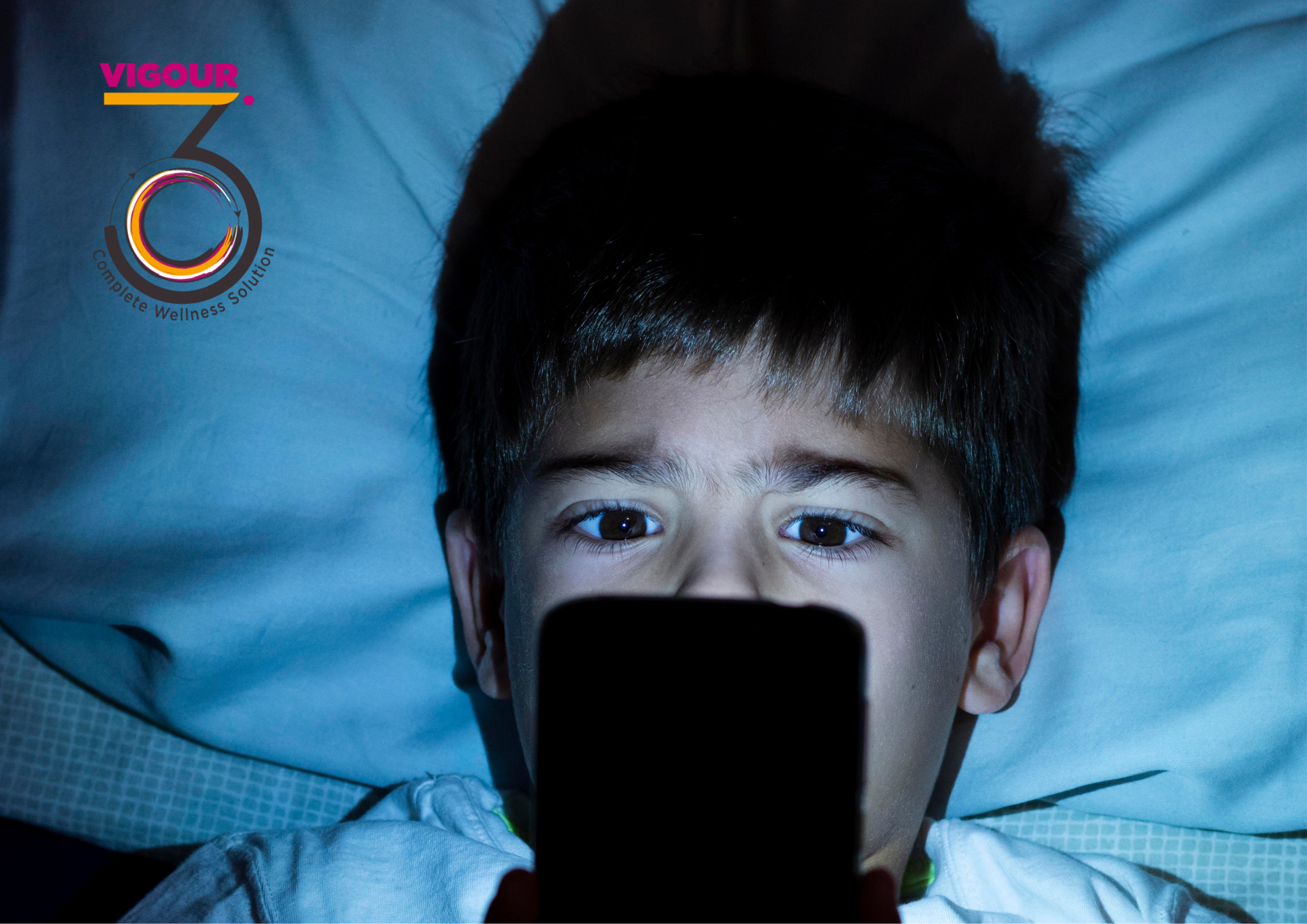
In today's digital era, children are increasingly exposed to blue light, which can have detrimental effects on their health. Understanding the scientific reasons behind their heightened sensitivity to blue light and implementing preventive measures are crucial for safeguarding their well-being.
This blog explores the harmful effects of blue light on children and provides practical tips for limiting exposure. Additionally, it highlights the Vigour360 School Health Program, a comprehensive initiative designed to address these concerns effectively.
Scientific explanation: Due to growing eyes, children are particularly susceptible to the harmful effects of blue light. Approximately until age 12, a child's natural lens is remarkably clear. Their eyes are more vulnerable to injury because this clarity provides little defence from the potentially hazardous effects of blue light.
Prolonged exposure to blue light can lead to various eye-related issues, such as blurry vision, digital eye strain, eye pain, dry and irritated eyes, and eye tiredness. It may also contribute to severe conditions like age-related macular degeneration, cataracts, eye cancer, and growths on the eye's clear covering. Due to increasing screen use, regular eye check-up is needed in children to address changes in eyesight. Vigour360 School Health Check-ups facilitate advanced eye check-ups in schools which is beneficial for many students to catch undetected eye disorders.
Blue light exposure at night significantly disrupts children's sleep patterns, resulting in poor sleep quality. Insomnia and changes in mood are often associated with inadequate sleep, impacting their overall well-being and academic performance.
The high levels of blue light children are exposed to can potentially affect their mental health by interfering with natural rhythms and keeping the brain active for a long time. This disruption may contribute to mood changes, increased anxiety, and difficulties in maintaining a healthy emotional state.
Children spending long hours on devices, face difficulty to concentrating. These children do not like to socialise and show less participation in school activities. It affects their focus and studies in the long term.
1. Set boundaries for screen time:
Establishing and encouraging breaks for alternate activities can help children to detach from the screen.
2. Encourage physical activity:
Encouraging children to engage in physical activities, such as sports and outdoor play, not only limits screen time but also promotes overall health and development.
3. Educate children about responsible device usage:
Teach children about the potential risks of excessive screen time and the importance of taking regular breaks.
4. Create phone-free zones:
Establish designated areas, such as the dinner table and bedrooms, where digital devices are not allowed.
5. School Health Check-ups:
School Health Program is an all-encompassing initiative designed to address the health concerns of children, including blue light exposure. Vigour360 provides comprehensive health check-ups, education on responsible device usage, and tailored strategies for optimizing well-being in educational settings.
Understanding the detrimental effects of blue light on children's health and implementing preventive measures is essential for mitigating potential risks. By setting boundaries for screen time, encouraging physical activity, promoting responsible device usage, creating phone-free zones, and utilizing initiatives like the Vigour360 School Health Program, parents and educators can protect children from the harmful effects of blue light and ensure their overall well-being and academic success. Connect now for school health services.
Comments (0)